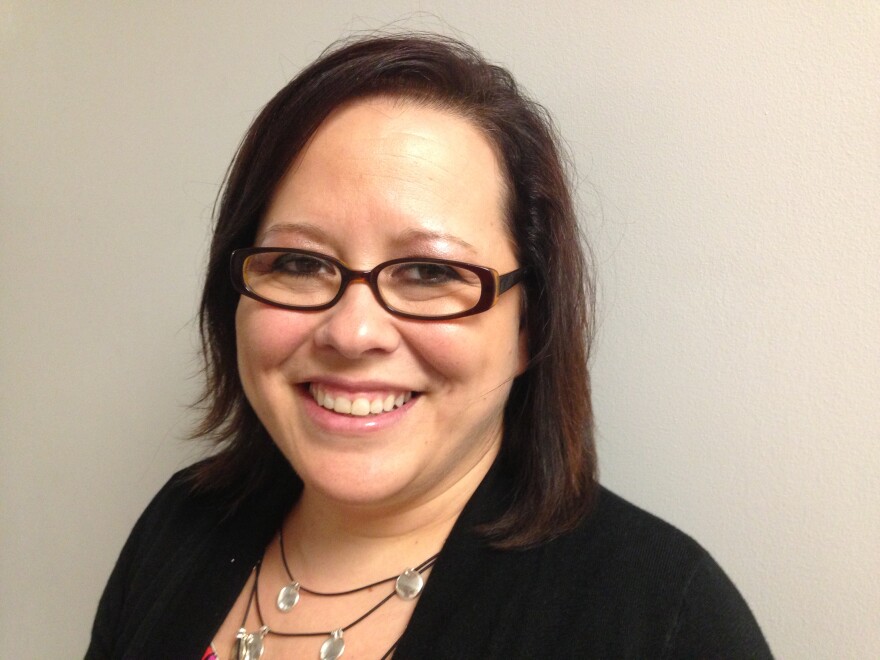Kansas City’s Historic Northeast is known for its great cuisine and iconic old homes.
But it also grapples with a reputation of vandalism and other crime, says Lisa Donnici, who moved to the Historic Northeast roughly 14 years ago.
Her relationship with the area — made up of six distinct Kansas City neighborhoods that are just south of the Missouri River — goes back much farther, however.
She grew up there as a child, but her mother moved the family away so Donnici could attend schools in the suburbs. Marriage brought her back to the area.
Last week, her neighborhood association, Scarritt Renaissance, hosted a KCURcommunity listening session, part of our Beyond Our Borders project that takes a look at how geographical boundaries affect Kansas Citians.
The project is first taking a look at how Troost Avenue serves as a socioeconomic border in Kansas City.
During the session, Donnici and other members of the Historic Northeast shared with KCUR what matters to their community. We invited Donnici to speak on the air about the group’s concerns.
Here’s a recap of her interview Thursday with Gina Kaufmann, host of talk show Central Standard:
Can you tell us a little bit about your decision to move back?
“I had always had a draw to it. To me, there are no homes like it in the entire Kansas City area. There is so much character. I love the architecture. You can’t even describe them in one word or one style because none of them look alike.
You go down one street, you may have a couple of Tudors. You go down another street, you may have a couple bungalows. You go down Gladstone Boulevard where the Kansas City Museum is and you have a few mansions. I think that’s what I like the most. You don’t see any cookie-cutter construction.”
How have you struggled to reconcile your childhood memories with the reality of living in this neighborhood in the 2000s as a grown-up?
“I knew what some of the stereotypical thoughts of what Northeast was today. People thought Independence Avenue was just a bunch of hookers — I can’t think of nice words to say. My mother taught me to see the forest for the trees, or see the beauty of things. That’s what I continue to see. I am nostalgic. I am sentimental, so I kept looking for those things. And I actually think that I saw more and found more than what I was looking for.”
What is it you discovered that you hadn’t expected?
“A lot more younger people were there than I thought. I was finding other people, such as us, that were returning to the neighborhood or that never left.”
When people in other parts of the city ask you about the Northeast and want to know what it’s like to live there, what do you say to them?
“The sense of community is nothing like you’ll find anywhere else. You can get anywhere you need to go quickly. You have all the conveniences of living in the city, but you have so much that you would have in a small town. You have all the closeness of your neighbors and so much community activity that I don’t feel that I see in other places.”
Are there any misconceptions about the Northeast that you’d like to correct?
“That it’s not just crime-ridden. It’s not as bad as people like to paint the picture. Sure, we have those things, but it happens everywhere, too.”
People say this is one of the most diverse neighborhoods in the city. How do you experience the diversity of your community?
“Through restaurants. Through grocery stores. Through the art that’s displayed or murals. Through homes, the way that people choose to decorate their homes.”
What kinds of crime do you and your neighbors experience, and how do you deal with it?
“Probably vandalism would be part of it or maybe loud noises or partying going on too late. Sometimes it could be property maintenance. I wouldn’t say violence, like robbery or armed robbery, but there are some burglaries.”
Why does (property maintenance) matter to the overall well-being of the neighborhood
“Because I’ve probably never seen people take more pride in their neighborhood. It becomes more important when we see someone else decorate their home and take the time to landscape and the person next to them has let their yard grow over a foot tall or the house is chipped and needs painted.
So, we all take time turning in information to codes or neighborhood associations. We also take time knocking on people’s doors and tell them, maybe they’re not aware of code enforcement.”
This look at Kansas City's east side is part of KCUR's months-long examination of how geographic borders affect our daily lives in Kansas City. KCUR will go Beyond Our Borders and spark a community conversation through social outreach and innovative journalism.
We will share the history of these lines, how the borders affect the current Kansas City experience and what's being done to bridge or dissolve them. Be a source for Beyond Our Borders: Share your perspective and experiences east ofTroost with KCUR.



